
Top 10 Special Melon Varieties
In this article, we'll explore 10 special melons that you can grow at home. Whether you're looking for a hands-on grow or a simple experience, and whether you want to eat your fruit raw, in a salad, as a cocktail, or as part of a hearty meal, we've got the melon for you!
You may have childhood memories of biting into a nice, cool slice of watermelon on a hot summer's day. But did you know that there are actually many different exciting melon varieties that can easily compete with the famous summer classic?
In this article, we’ll introduce 10 special types of melon, which aren’t just tasty but—this is your lucky day—can be cultivated at home! Read on to discover your favourite, and start your growing project today.
What makes a melon special?
Compared to more common melons such as watermelon, many of the special melons discussed below are rarer varieties that offer a whole range of flesh colours and textures, and a whole host of flavours to boot. What's more, they are highly nutritious foods with significant potential wellness benefits, making their consumption all the more compelling!
A fascinating fact about melons is that they belong to the Cucurbitaceae family, also known as the gourd family, which encompasses a wide range of vegetables, including pumpkins, cucumbers, and luffa, the source of the renowned natural sponge, loofah.
Are melons good for you?
It seems that there have been some misconceptions about the impact of melons on health and well-being. In particular, people mistakenly believed (or believe) that these sweet, delicious things are basically just that: sweet and delicious. It was thought that a melon could only provide water and sugar to the body, leading to weight gain and increased blood sugar levels.
We now know that this is a myth! It was prevalent mainly in the 20th century and is now a thing of the past. We can safely say that melons are generally very nutritious—and delicious—fruits.
The cantaloupe, for example, has been linked to the following potential wellness benefits:
- May boost the immune system
- May improve skin health
- May improve cardiovascular health
- Good for digestion
- May lower blood pressure
- May produce healthy bones and teeth
- May help protect the eyes from age-related diseases
These potential benefits are due to the many nutrients found in cantaloupe, including fibre, potassium, carotenoids, B vitamins, vitamin A, vitamin C, vitamin K, and calcium.
For example, vitamin C, vitamin K, and calcium are essential for bone health, while B-complex vitamins are involved in the synthesis of neurotransmitters in the brain, such as dopamine and serotonin. Potassium can lower blood pressure, and fibre is essential for healthy digestion… the list goes on.
Top 10 special melon varieties
Now that you know that eating melons (or consuming them in other ways—think smoothies or fresh juice) not only tickles your taste buds but can also improve your well-being, let us keep our promise and introduce you to 10 fantastic speciality melons—that you can grow at home!
Whether you're looking for an easy or more challenging growing experience, and whatever your taste preferences, we've got the melon for you.
1. Muskmelon
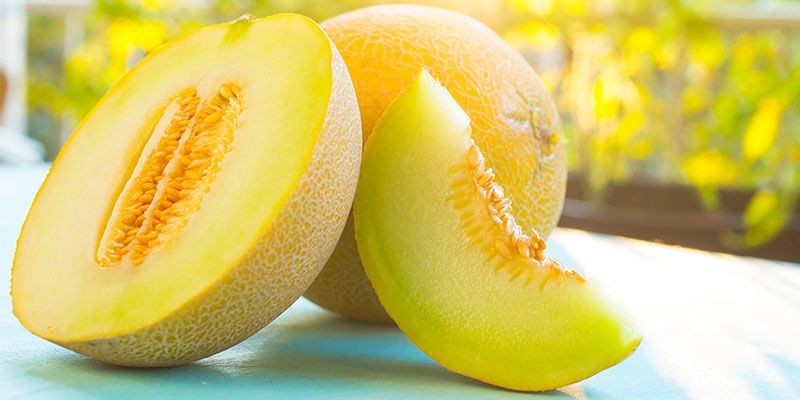
These varieties are known for their musky-scented, sweet flesh that is deliciously juicy and beautifully orange. Muskmelons are usually eaten fresh, often as a dessert or as a sweet and refreshing snack on a summer afternoon.
Muskmelons require a long, warm growing season and are susceptible to certain fungal diseases, so they'll do better in less humid conditions. Sow them in moist, well-drained soil in full sun. Frost will kill them, so avoid planting them too early in the year.
These annual vines produce yellow, unisexual flowers that will themselves produce beautiful fruit teeming with nutrients and giving off a wonderful, sweet smell at harvest time. They also change colour when they're ripe.
2. Melon Charentais
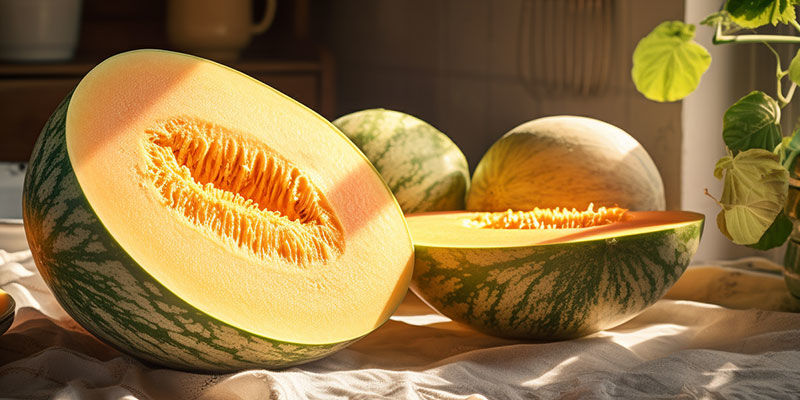
Melon Charentais are easy to grow and absolutely delicious, with a flavour that could be described as a more intense version of the cantaloupe melon (to which they are related), with its own distinctive twist. Best to try for yourself!
These melons are quite small, growing to the size of a softball. Their skin is soft, with shades of grey/green and cool dark stripes, before taking on a light/yellow hue as the fruit ripens.
As soon as the risk of frost is over, you can start growing Charentais melons outdoors. Or, if you don't want to depend on the weather, start them indoors in a greenhouse and transplant them out a month or so later. Keep them well-watered and consider adding a 5–7cm layer of organic matter to the topsoil, and your sweet little friends will soon be refreshing your body and mind.
3. Flavor Journey
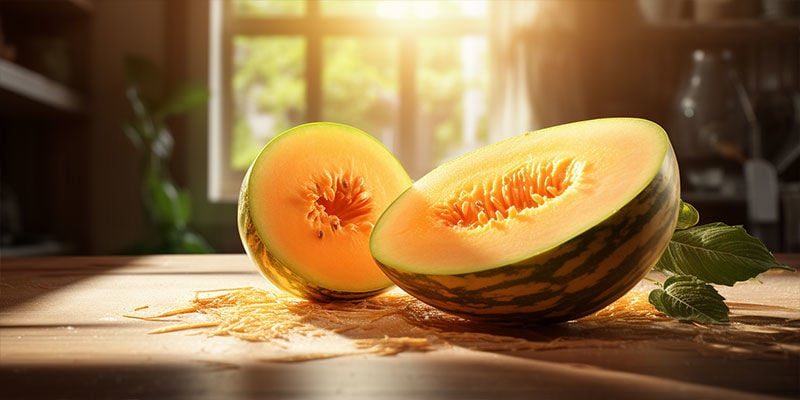
Flavor Journey has a very smooth, whitish skin and a beautiful light green flesh of tasty fruit.
With the right amount of sun and a little care, this cultivar will fruit set over 2–3 harvests. The plants have a rich, dark green colour and a nice canopy at harvest.
As a type of honeydew melon, Flavor Journey offers a high degree of internal fruit quality and makes for a sweet and refreshing bite.
4. Watermelon
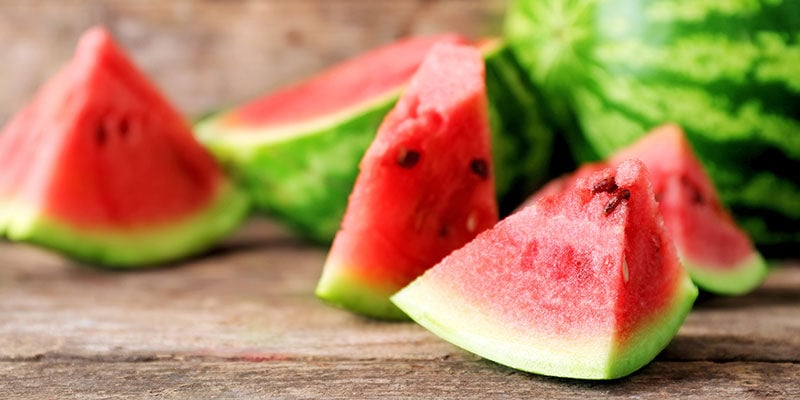
Nothing compares to the refreshing sweetness of a large, juicy watermelon on a hot summer's day. Eat it raw, in slices, or toss it into a nice salad with some feta cheese and fresh mint. Whichever way you choose to eat it, watermelon will taste even better if you grow your own at home.
While they can be a little tricky for less experienced growers, they're a breeze for experienced gardeners. Start them indoors in a propagator about 2–3 weeks before the last frost date, then transplant them outdoors about two weeks after the last frost. In warmer climates with long growing seasons, you can sow them directly outdoors about 1–2 weeks after the last frost—but only if the soil has warmed up to at least 18°C!
Watermelons love the sun and heat, and they thrive in regions with a long growing season. Harvest in late summer and enjoy your own exquisite varieties of this celebrated classic.
5. Piel de Sapo
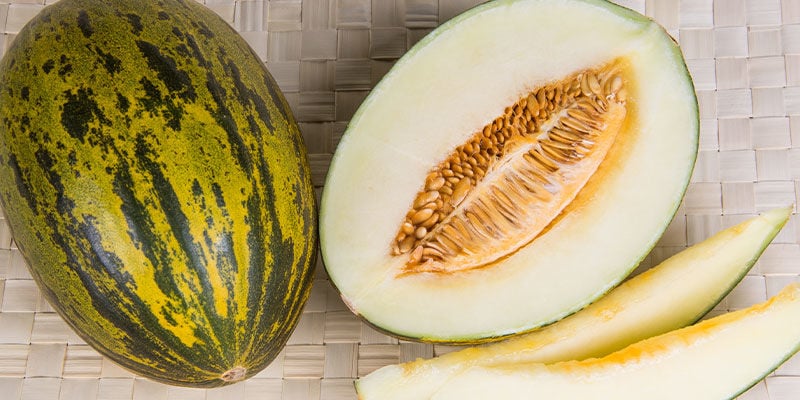
Versatile in the kitchen and fun in the garden, Piel de Sapo (also known as Santa Claus melon) is a great choice for growing melons at home.
Once temperatures are above 20ºC outdoors, sow four seeds, in clumps, into moist soil, allowing for 50cm of space between each clump. After one week to 10 days, sprouts should emerge from the soil. Note that Piel de Sapo likes a lot of sun, so be sure to plant seeds somewhere where sun exposure is ample.
This melon’s rind is wrinkled and its flesh has a slightly sweet flavour that makes it a fantastic addition to fruit salads, gazpachos, sauces, and cocktails. It goes well with citrus fruits, olive oil, and creamy cheeses—yum!
6. Bitter Melon
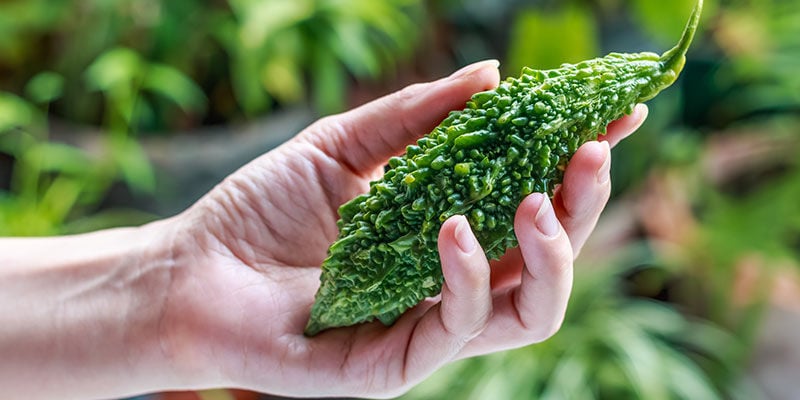
A staple in many Asian cuisines, bitter melons have a bitter and sour flavour that goes well with pork or prawns, in curry or pickled.
There are several varieties of bitter melon to choose from, each with a slightly different look and taste. In general, these varieties are a warm season crop and will thrive in tropical/subtropical environments. Make sure you have a growing space that can mimic the heat and humidity they like before choosing bitter melons as your crop.
Bitter melons are also associated with many potential wellness benefits, including:
- Rich in nutrients
- May help to lower blood sugar
- May help to lower cholesterol levels
- May promote fibre intake
7. Lemon Drop
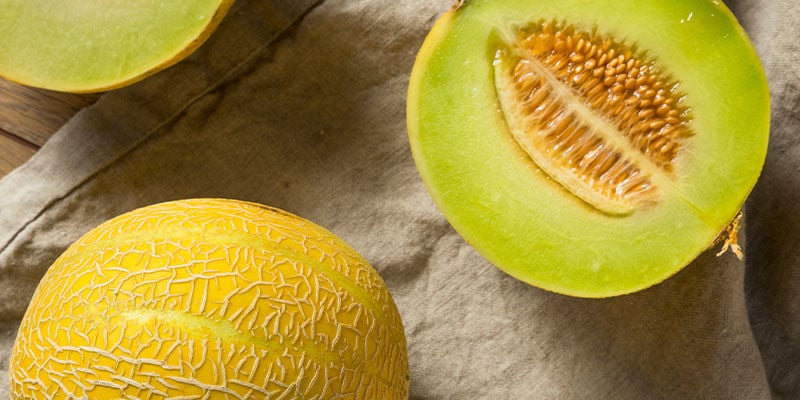
This melon is for those who love sweet and tangy flavours. Lemon Drop melons are high in citric acid. At first, they taste subtly sweet, like honeydew or watermelon, but soon they’ll take on a sharp tang reminiscent of lemons.
Native to Arizona, it owes its name not only to its distinct lemon-like flavour, but also to its yellow-green rind. The texture of the flesh is similar to that of a cucumber—juicy and crunchy, with a pale green colour.
Lemon Drop melons are versatile; you can combine them with both sweet and savoury dishes, enjoy them raw as a snack, or add them to fruit salads, cocktail concoctions, or salsas.
8. Kiwano
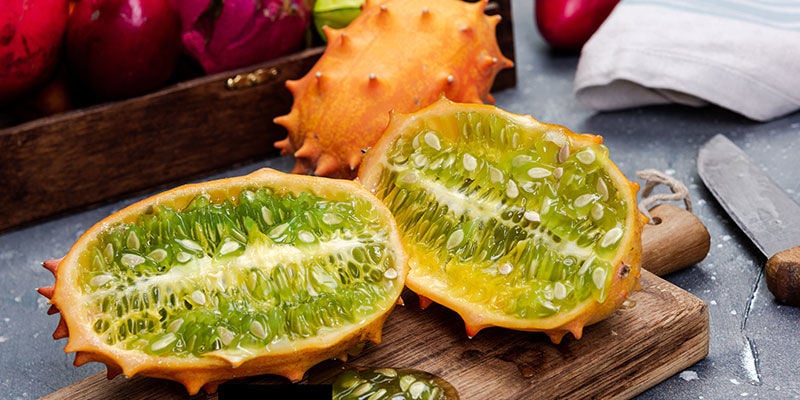
These horned darlings are sure to impress with both their appearance and flavour. Also known as the jelly melon, this odd-looking variety is as soft on the inside as it is hard on the outside (or at least hard-looking).
Its flesh is lime green with a jelly-like texture. Some compare its flavour to banana; others to kiwi, cucumber, or lime. And the outside of this interesting fruit looks a bit like a dragon's egg, with yellow/orange colours.
Kiwano does best in well-drained, slightly acidic soil and full sun. It is best started in a greenhouse and then transplanted outdoors.
9. Gold Crown
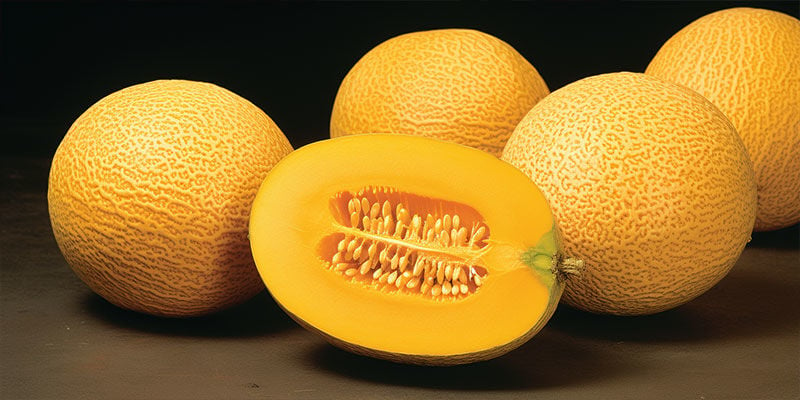
Aptly named, Gold Crown's rind turns a royal golden yellow as the fruit ripens. The flesh is dark orange and has a deliciously sweet flavour.
Early maturing, these melons are ready to harvest in about 60–85 days from transplanting, making them a great choice for growers in regions with shorter growing seasons.
Choose Gold Crown and you'll be rewarded with strong, high-yielding plants in no time.
10. Melon Pear
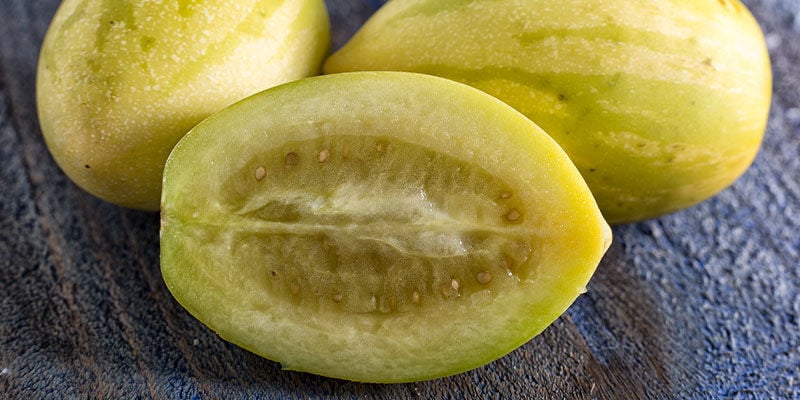
It's in the name—melon pears taste like a positively surprising cross between the two fruits. Also known as pepino dulce (sweet cucumber in Spanish), they are closely related to tomatoes, aubergines, and chillies, all members of the Solanaceae family.
Native to South America, melon pears thrive in warm temperatures and full sun. When these conditions are provided, the melon pear is very easy to grow. All you need to do is treat them to some rich soil with neutral pH levels.
The plants will produce fruits one after the other, ripening between July and October. The fruits are ready for harvest when they develop purple streaks.
Find your melon match
Well, doesn’t all that sound delicious? And like we promised, a lot of the melons on this list are super easy to grow. Most of them require nothing more than the usual sowing, transplanting, and watering. Plus, they can be grown in a wide variety of environments. Even if you live in a cooler climate, you can use a greenhouse to get your melon grow going.
But it gets even better: you can now buy seeds for many of the varieties listed above from the Zamnesia store today. Head over and browse to find your perfect melon match! Easy.
-
 3 min
19 October 2023
Top 10 Plants For Butterflies
Have you ever wanted to attract some butterflies to your garden? Well, now you can. In this article, we delve into ten plant varieties that are sure to bring in the winged beauties. Not only will...
3 min
19 October 2023
Top 10 Plants For Butterflies
Have you ever wanted to attract some butterflies to your garden? Well, now you can. In this article, we delve into ten plant varieties that are sure to bring in the winged beauties. Not only will...
-
 4 min
24 August 2023
Top 10 Ornamental Plants To Grow Indoors
This diverse selection of ornamental indoor plants caters to all preferences and levels of expertise. Keep it simple or challenge yourself—any pick will reward you with astounding looks or alluring...
4 min
24 August 2023
Top 10 Ornamental Plants To Grow Indoors
This diverse selection of ornamental indoor plants caters to all preferences and levels of expertise. Keep it simple or challenge yourself—any pick will reward you with astounding looks or alluring...
-
 5 min
26 May 2023
10 Tomato Varieties To Grow
Growing tomatoes used to be a tall order. Ok, so while the plants themselves can reach some dizzy heights, the task itself is a hugely accessible one. So regardless of your prior expertise, setting...
5 min
26 May 2023
10 Tomato Varieties To Grow
Growing tomatoes used to be a tall order. Ok, so while the plants themselves can reach some dizzy heights, the task itself is a hugely accessible one. So regardless of your prior expertise, setting...
-
 6 min
28 December 2021
Which Fruits And Veggies Make The Best Bongs & Pipes?
Take your smoking sessions to the next level by incorporating your favourite fruits and vegetables. Whether you're in a pinch or just looking to have some fun with your herb, this is the guide for...
6 min
28 December 2021
Which Fruits And Veggies Make The Best Bongs & Pipes?
Take your smoking sessions to the next level by incorporating your favourite fruits and vegetables. Whether you're in a pinch or just looking to have some fun with your herb, this is the guide for...





 United States
United States











